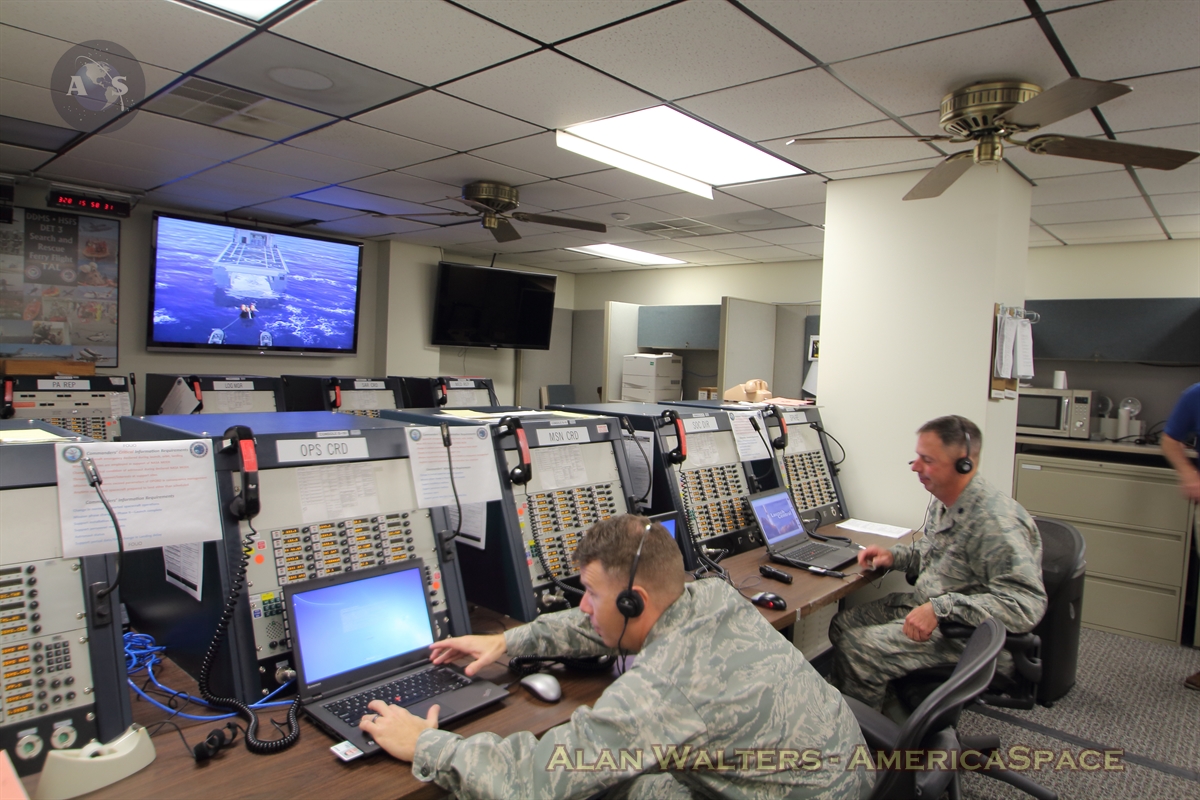
When NASA’s Orion crew capsule takes flight for the first time on Dec. 4, 2014, several agencies will be supporting what is, without a doubt, one of the most important missions of this decade for the next generation of America’s Human Spaceflight Program. The NAVY, Lockheed Martin, United Launch Alliance (ULA), Air Force Reserve 920th Rescue Wing, and others will be playing key roles in the overall success of the orbital flight test, and earlier this week the Air Force 45th Space Wing 45th Operations Group invited AmericaSpace to Patrick Air Force Base and Detachment 3, also knows as the Dept. of Defense (DoD) Human Spaceflight Division, for a tour and discussion about their role in supporting Orion’s first mission, as well as their plans for supporting human spaceflight launch and recovery ops from U.S. shores again in the coming years.
Commanded by Brig. Gen. Nina Armagno, the 45th commands both Patrick Air Force Base and Cape Canaveral Air Force Station, and their army of nearly 15,000 personnel support everything from rocket and spacecraft processing (from flight hardware arrival through launch) to operating and maintaining assets across 15 million square miles of the Eastern Range (including airfield operations, weather, and communication support) to providing mission and medical support.
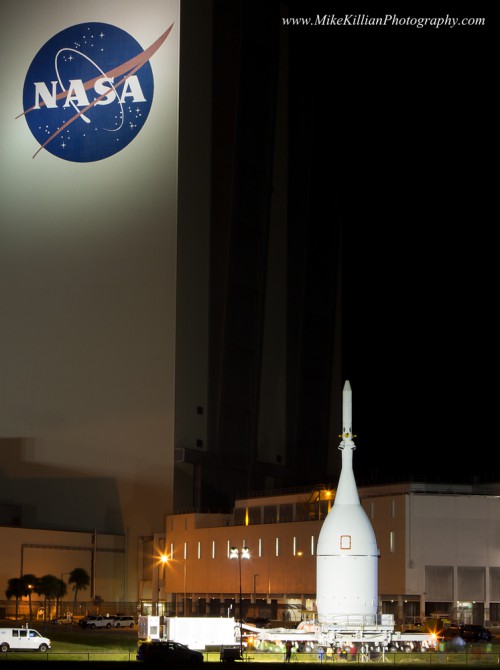
The Wing is broken down into four groups; Launch, Operations, Mission Support, and the Medical Group, and they are ultimately in charge of launching all East Coast missions for NASA, the DoD, and commercial companies. ULA’s Atlas-V and Delta-IV rockets, as well as SpaceX’s Falcon-9 and Orbital’s Antares (and formerly NASA’s space shuttle fleet)—none fly without the 45th SW giving the GO first.
But there’s one Detachment of the 45th Operations Group who is specifically responsible for supporting U.S. human spaceflight for NASA and NASA-sponsored crewed missions (SpaceX and Boeing Space Station crews soon), and that is Detachment 3, who is responsible for coordinating the DoD’s nominal and contingency support for U.S. human space flight programs. They coordinate astronaut rescue and recovery and provide landing site support, payload security, medical airlift / sealift support, and other services. They also develop plans for U.S Strategic Command (USSTRATCOM) and coordinate with various military departments and other DoD agencies.
During manned missions, such as those Orion will fly at the turn of the next decade atop NASA’s mammoth Space Launch System (SLS), Detachment 3 activates their Support Operations Center (SOC) to maintain contact with NASA and the Joint Space Operations Center, and it will go into action again for EFT-1 on Dec. 4.
“Our unit is really for human spaceflight / manned launches, but Orion EFT-1 is setting the stage for our support later with NASA’s Exploration Mission-2 (EM-2),” said Jay Summers (Maj., USAF ret.), a Communications Specialist at Detachment 3. “Our SOC can monitor not just our DoD unique channels to the USS Anchorage, which is supporting recovery of Orion for EFT-1, but we’re also tied into our higher headquarters at Vandenberg AFB and USSRATCOM headquarters in Nebraska. We are also tied into all of the mission loops that NASA is using for EFT-1, everything from the Flight Director to Directory Control to the engineering loops, all of that is available to our controllers at the SOC to monitor, and make inputs if necessary.”
“On the ship itself we are going to have a smaller subset of those; we are only going to be able to have two of those loops up at any one time, which we will cycle through depending on where we are in the evolution of the mission,” added Summers. “We’ll have four folks in the SOC that will be reporting back to Orion’s recovery ship and USSTRATCOM, the SOC is really the hub.”

When Orion launches crews on SLS the 45th’s SOC at Detachment 3 will be manned with a full support team, and should something go wrong on EM-2 (and the following missions) that would require a contingency—such as if something went wrong at launch, or the capsule landed short or landed long—then Detachment 3 would be able to organize the support for NASA.
“On the recovery ship for EFT-1 we are just there to support the nominal operations,” stated Summers. “I’ll be there for the DoD communications, and we will also have Air Force logistics and safety folks onboard, as well as a Naval officer to serve as a liaison between the NASA team and the actual recovery ship team. We speak both NASA and DoD, so we can translate what each of the parties wants or needs, we’re the broker between NASA’s wants and desires versus what the DoD can provide.”
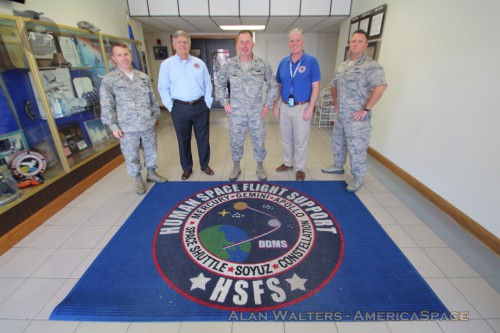
Although it’s the NAVY who will be recovering Orion from the Pacific Ocean at the end of its EFT-1 mission, it was the 45th’s Detachment 3 who trained them for the recovery operations, and they serve as the bridge between NASA and whatever support / assets the space agency needs for the mission.
Currently, Detachment 3 operations focus on the International Space Station (ISS) and the three-man Russian Soyuz spacecraft U.S. astronauts are forced to buy $70 million tickets on for transport to and from the ISS. When astronauts return to Earth on Soyuz, NASA requires an aeromedical evacuation C-17 aircraft, and so Detachment 3 personnel deploy for each Soyuz landing to coordinate with NASA, U.S. European Command, U.S. Central Command, and the Kazakhstan Defense Attaché Office. If an astronaut aeromedical evacuation is required, Detachment 3 personnel become the command and control (C2) element for deployed forces.
“When NASA needs something from the DOD that they can’t provide themselves or secure affordably through commercial means they come to us for that capability,” said Lt. Col. Michael “Tank” McClure, Commander of the 45th Operations Group Detachment 3. “We then go and scour aircraft and ship manuals to find the right capability to meet NASA’s requirement, then we coordinate the scheduling process for that asset or unit, then we train those forces for whatever the unique mission is that NASA needs them to do.”
In the case of Orion and the EFT-1 mission, NASA needed a ship to provide a recovery capability of a human spaceflight vehicle from hundreds of miles offshore, something that hasn’t been done since the Apollo-Soyuz program of the 1970s, so they knocked on the door of Detachment 3 for help. Because the space shuttle landed on a runway, NASA always tasked the DoD with alert support, such as employing the 920th Rescue Wing and their search and rescue “Guardian Angel Airmen” to secure the area around the launch site and be ready to rescue a crew if needed. But with the new face of American human spaceflight taking the form of capsules, NASA will need DoD to provide an actual recovery capability, not just alert support, and that’s where Detachment 3 comes in.
“Our unit, over the past several years, has been engaged with the NAVY and other services to find that capability to do exactly that mission,” said Lt. Col. McClure. “We settled on a San Antonio-class amphibious assault ship, the USS Anchorage (LPD-23). It’s mission is ship-to-shore delivery of Marines and combat capability, so it’s like a giant pick-up truck. It ballasts down into the water and opens up its stern gate, and it delivers LCAC, or Landing Craft Air Cushion, which are giant hovercraft loaded with tanks and trucks and other equipment for delivery to shore during wartime or military operations.”
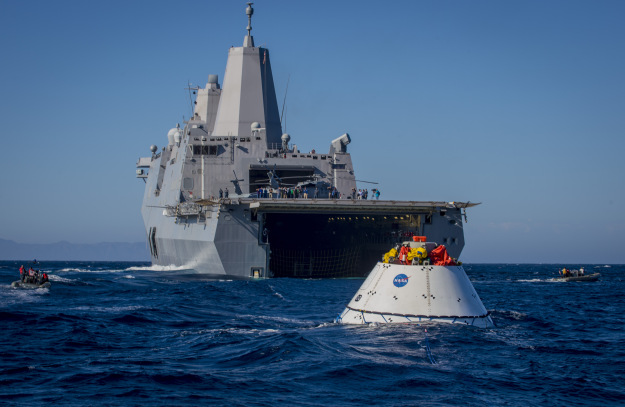
Orion’s recovery operations are based on what McClure calls a “dead LCAC recovery,” which, simplistically, means a cable is attached to the vehicle (in this case, Orion) and then they winch it into the well deck of the ship. One of the first things the NAVY divers will do upon recovery is assess the hazardous materials to make sure it’s safe to operate on or around Orion, and the dive crew in charge of doing so was trained for EFT-1 recovery ops by a Detachment 3 “Space Hazmat Specialist.”
Training for the recovery of Orion has been going on for the past 18 months, both in San Diego and at NASA’s Neutral Buoyancy Laboratory (NBL) in Houston, and just last week Detachment 3 gave a very high level briefing to senior NAVY leaders about the spacecraft, the hazardous materials, and the procedures that will be employed for Orion’s safe recovery.
But training for hazardous materials and recovery operations is one thing, doing the real thing in rough seas or unfavorable weather is another. Orion won’t launch from Florida if the weather at the splashdown zone off southern California is bad, but if the seas decide to get rough while Orion is in-flight the NAVY will be ready, thanks in part to training by Detachment 3.
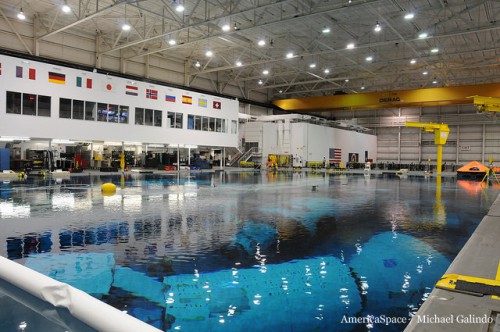
“We’ve trained the divers, the small boats, the ship and the recovery crew to operate in seas of up to 2.5 meters (8 feet), those are the conditions they have rehearsed the recovery procedure in,” added McClure. “If the weather exceeds that then it will be a day of launch determination on the part of NASA, Lockheed and the recovery team. We will have all the com channels open and relay to the launch team to make a decision.”
At the end of the day Orion’s EFT-1 mission is practice, a warm-up for when the spacecraft conducts missions with human beings to destinations farther out in space than anyone has ever been, and Detachment 3 is already preparing for the first Orion missions EM-1 and EM-2 on the SLS in 2018 and 2021. Although EM-1 will not be crewed, it will put Orion’s launch abort system (LAS) into action, and—being that the LAS is meant to send crews away from a problem rocket safely—Detachment 3 will be standing by to provide some type of launch abort coverage.
“Nothing happens without the paperwork in place, so we have a liaison officer at USSTRATCOM that is currently working on the orders portion of the paperwork that will task the DoD to support EM-1,” said Lt. Col. Jason Havel, Chief of the Commercial Crew Division at Detachment 3.
Readying For the Next Generation of U.S. Human Spaceflight After EFT-1
It will be at least seven years before the first crew flies on Orion / SLS for EM-2, but SpaceX and Boeing will be doing so much sooner, flying crews starting in late 2016 or early 2017 under a recently awarded multi-billion dollar Commercial Crew contract to transport NASA’s astronauts to and from the ISS, and Detachment 3 is getting ready to support those NASA-sponsored missions as well.
“Detachment 3 is in the process of coordinating with those two manufacturers (SpaceX and Boeing) and NASA’s Commercial Crew Program office,” said Havel. “NASA’s in charge of the commercial providers, and we are in charge of providing support for those commercial providers, so it’s a unique relationship in the fact that we’re working through NASA with SpaceX and Boeing to make sure DoD is up to speed with what is expected of our expertise.”
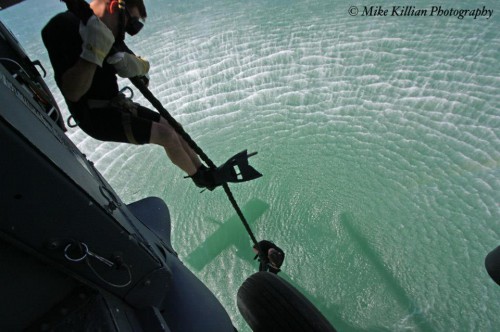
“When that capsule (SpaceX Dragon and Boeing CST-100) is in flight, and prior to docking with the ISS, we’ll have DoD forces on alert to support any kind of a contingency where they either don’t make it to orbit, or they are forced to come back from orbit before they dock; either way our forces will be ready to go,” added Havel. “Once the capsule undocks from the ISS, and all the way down to landing, we’ll have forces on alert as well for that. So SpaceX and Boeing are responsible for the nominal recovery, but we’ll be ready if there is some kind of contingency.”
Some of that support can be seen patrolling the skies over the Cape for each launch, courtesy of the search and rescue airmen and Pararescuemen (PJ’s) of the 920th Rescue Wing (read the exclusive story flying with the 920th for the historic first commercial spacecraft launch to ISS). They were the primary rescue force serving as “guardians of the astronauts” for 50 years, providing contingency response for a variety of emergencies that could potentially come up during a shuttle launch or landing, and their expertise will again be employed for the next generation of U.S. human spaceflight. However, according to Detachment 3, it doesn’t HAVE to be the PJ’s of the 920th, if needed Detachment 3 can task any number of other rescue personnel to get the job done when crews start flying from America’s shores again.
“I expect that our standard footprint would be a C-17 with a PJ alert team and all of the equipment that’s required, such as zodiac boats and other equipment they would need to deploy in an air-drop scenario to support a capsule that splashes down during a launch abort or descent contingency landing,” said Commander McClure. “But it doesn’t necessarily have to be a PJ team. If for some reason the guardian angel teams are extremely tasked, say due to contingency operations overseas, then we can secure other DoD capabilities that are similar, such as NAVY SEALS or NAVY divers, as long as they have the water and land capability matched with some medical capability. The PJ’s are the best force for that, but it doesn’t have to be them.”
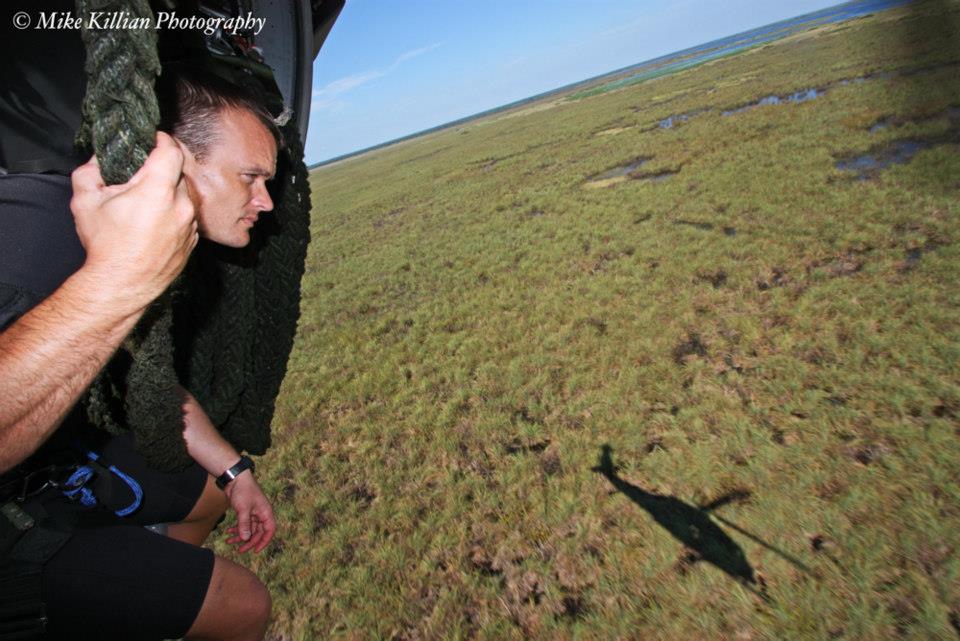
The PJ’s served shuttle well, and their “Superman” training makes them the best for the job of providing search and rescue, but Detachment 3 does not want to limit their options, so they are in the very early planning process of looking into alternative forces capable of securing capsules that can get to crews quickly in the event of an emergency. Two possibilities, according to Havel, are the Dept. of Homeland Security and the U.S. Coast Guard.
As for EFT-1, both McClure and Havel understand better than many the significance of the mission and offered their personal thoughts on what it feels like to be a part of it all.
“It’s pretty exciting, I’d like to think we are offering the level of support that’s expected of the DoD, and I think we’ll come through,” said Havel. “I’m personally very excited about the mission.”
“I think at some point every kid thinks about, dreams about, being an astronaut or being a part of the space program,” added McClure. “I think, without being an astronaut this is the next best thing, being involved with the recovery of their spacecraft. All the training, briefings and meetings leading up to that really get us where we need to be. It’s been a lot of work, it’s been a long time coming, and I’m really proud of the men and women of Detachment 3, they’ve done a really great job in preparation for this mission.”
Want to keep up-to-date with all things space? Be sure to “Like” AmericaSpace on Facebook and follow us on Twitter: @AmericaSpace
Missions » SLS » EFT-1 »



